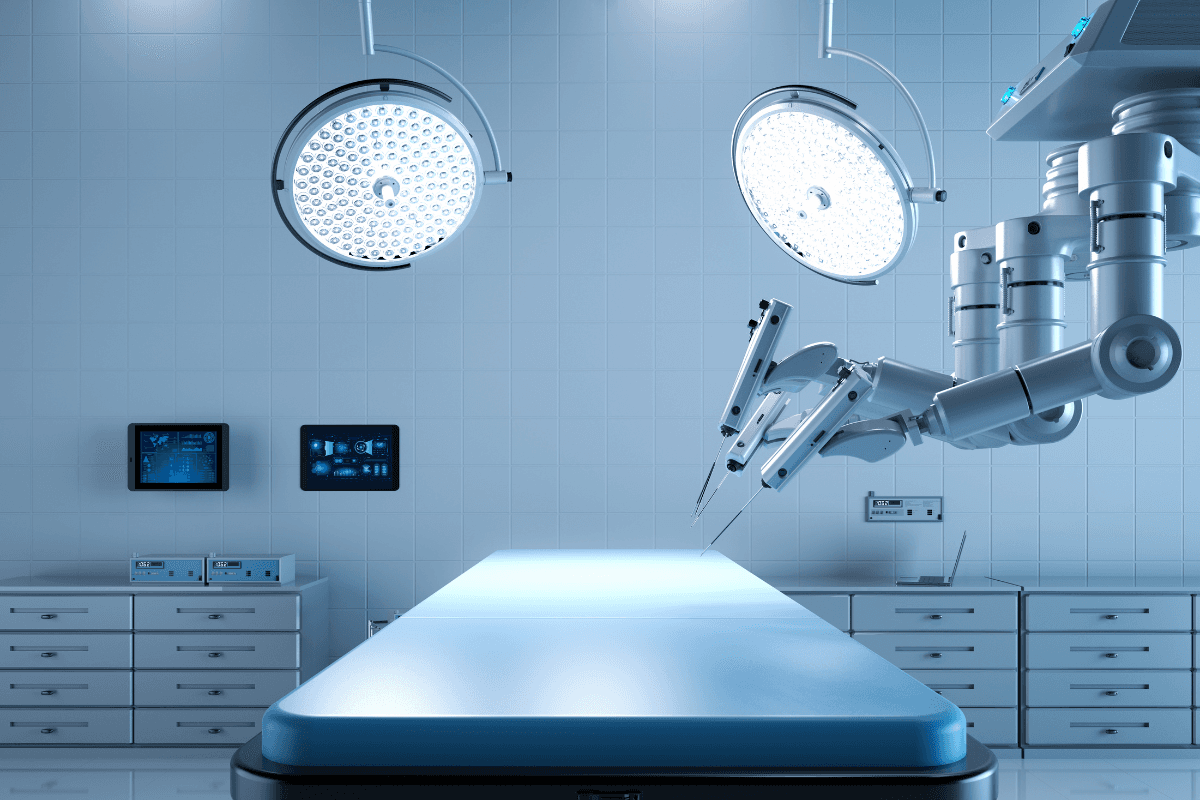Robotic Surgery

As medical technology makes leaps and bounds into the future, robotic surgery emerges as one of the most significant breakthroughs, promising a revolution in the field of surgery. These cutting-edge robotic systems are enhancing the capabilities of surgeons, offering unmatched precision, and introducing a new paradigm in minimally invasive procedures.
What is Robotic Surgery?
Robotic surgery refers to the use of robots in performing surgical procedures. Unlike the traditional image of a robot replacing a human, these systems are better viewed as extensions of the surgeon. The surgeon controls the robot's movements, allowing for enhanced dexterity, stability, and precision in procedures.
The Potential Benefits of Robotic Surgery
Robotic surgery brings a plethora of advantages to the operating table:
Enhanced Precision:
The fine-tuned movements of robotic arms can surpass the steadiness of human hands, leading to higher precision in surgeries.
Magnified Vision:
Robotic systems often come equipped with high-definition, 3D cameras that offer surgeons a magnified and clearer view of the surgical site.
Greater Flexibility:
Robots can access hard-to-reach areas and execute intricate maneuvers that might be challenging with human hands alone.
Reduced Patient Trauma:
Just like laparoscopic devices, robotic surgery promote minimally invasive procedures, which often results in less scarring, reduced pain, and quicker recovery times.
Challenges Ahead
While the potential of robotic surgery is vast, it is not without challenges. The costs of these systems can be high, making them less accessible to some healthcare facilities. Additionally, the need for specialized training can create barriers to widespread adoption. It's also essential to continuously address cybersecurity concerns, ensuring that these robotic systems are safeguarded against potential threats.
The Road Ahead
The future trajectory of robotic surgery is one of continued innovation and refinement. With advancements in artificial intelligence, we can expect these robots to have even more intuitive interfaces, further simplifying their operation. Moreover, as research progresses, the costs of these systems are likely to decrease, making them accessible to a wider range of medical institutions.
Conclusion
Robotic surgery stands at the cusp of redefining surgery as we know it. By offering unparalleled precision and control, these systems are ensuring that surgical procedures are safer and more efficient than ever. As technology evolves and becomes even more integrated with medical practice, the horizon of what's possible in surgery continues to expand.
Resources:
https://www.mayoclinic.org/tests-procedures/robotic-surgery/about/pac-20394974
https://hbr.org/2018/05/10-promising-ai-applications-in-health-care
https://pubmed.ncbi.nlm.nih.gov/31724999/